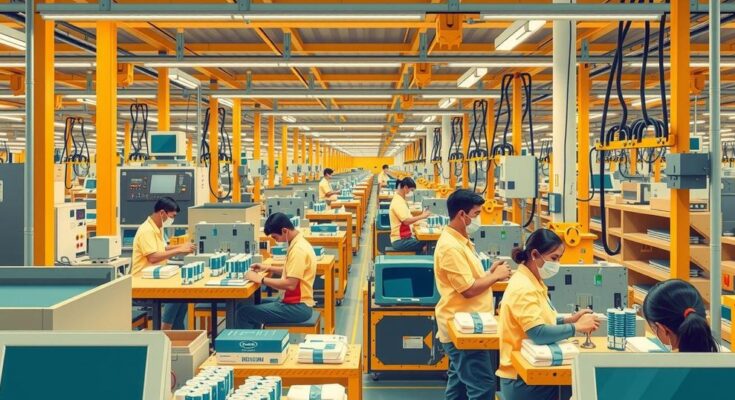China’s economy is facing severe challenges due to tariffs imposed by the U.S., particularly affecting the Guangdong province. Manufacturers are experiencing reduced orders while the economy grapples with slow growth and high youth unemployment. The situation exacerbates the already precarious financial circumstances of many workers and small businesses.
China’s economy is currently experiencing significant challenges. The province of Guangdong, which functions as the industrial heart of the country, is particularly affected by tariffs imposed by former U.S. President Donald Trump. These tariffs, which include a tax of at least 20% on all Chinese goods sold in the United States, have led to a notable decrease in orders and heightened uncertainty for manufacturers.
The impact on Chinese businesses is evident as factories like Johnny Pan’s, which has been operational since the 1990s, report drastic downturns in American sales, prompting a search for new markets. Small workshops also face difficulties, unable to raise prices amidst declining demand, and risking the livelihoods of numerous contract workers.
With exports constituting approximately 20% of its GDP, China is particularly vulnerable to trade shocks. The economy is already underperforming, characterized by reduced growth, high youth unemployment, and an influx of low-paid migrant workers. Despite some resilience afforded by reduced trade dependency on the U.S., there remains a pervasive apprehension about economic stability.
The restrained response from Beijing indicates a recognition of the delicate situation, as the government is mindful of avoiding confrontation while managing the fallout from the ongoing trade tensions. The context of broader geopolitical rivalry between the U.S. and China further complicates these economic dynamics, suggesting that tariffs are symptomatic of a larger struggle for global influence.
In summary, the imposition of tariffs by the United States has commenced a significant negative ripple effect within China’s economy, particularly in Guangdong, its manufacturing hub. The challenges faced by both large factories and smaller workshops underscore the urgent need for diversification and adaptation. As China’s leaders navigate this crisis, the ongoing geopolitical tensions with the U.S. forebode further complications for the future of trade and economic stability.
Original Source: news.sky.com




